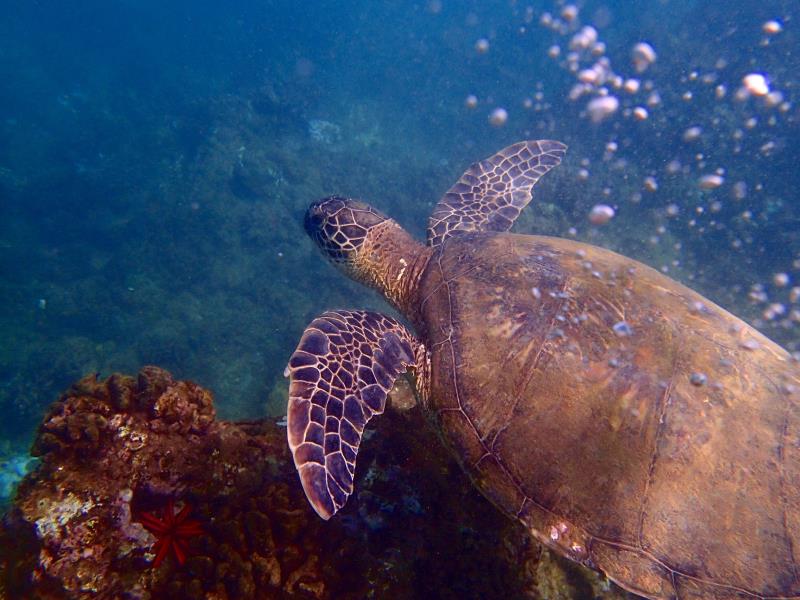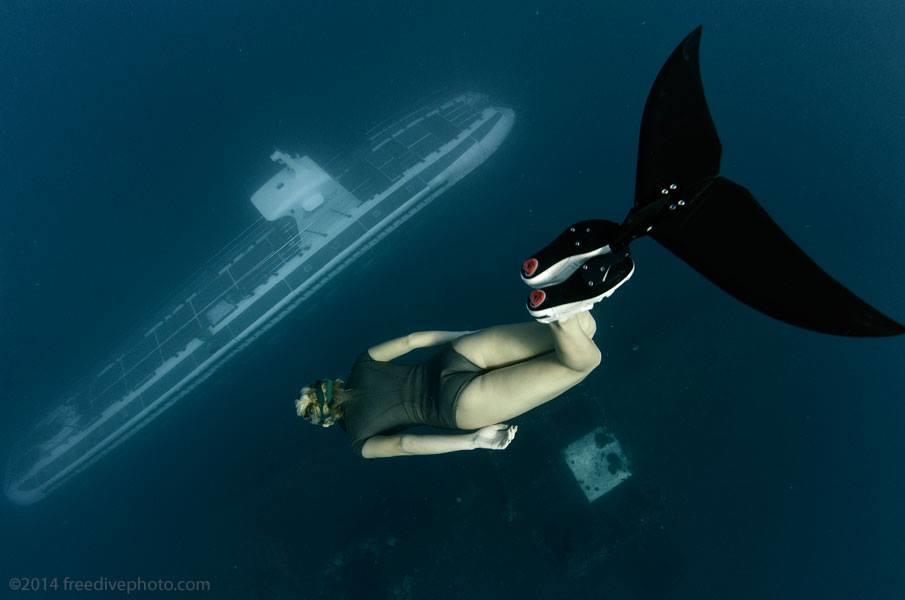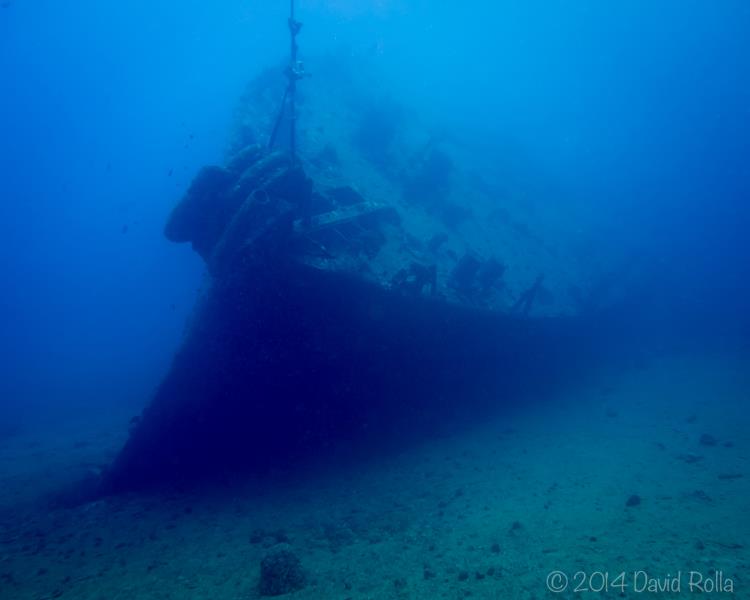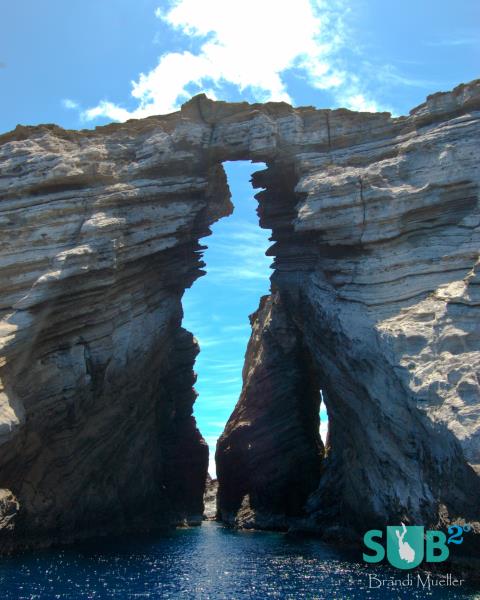 Advice on Scuba Diving in Hawaiian Islands, United States
Advice on Scuba Diving in Hawaiian Islands, United States
Part 1: Overview of Scuba Diving in Hawaiian Islands, (United States)
Hawaii was the last of the 50 United States to be added in 1959. The 1,500 mile archipelago is composed of many islands, the eight primary islands of Hawaii from north to south are: Niihau, Kauai, Oahu, Molokai, Lanai, Kahoolawe, Maui, and the “big” island of Hawaii. Continual volcanic activity is on the southern half of the island of Hawaii around Mauna Loa. The ever smoking Mauna Loa last erupted in 1984 and has erupted 30 times in the last 200 years. The Hawaiian Islands are the tips of huge mountains rising from the bottom of ocean. The big island's inactive Mauna Kea rises 33,476 feet (10,203 meters) from base to ocean floor. Measuring from base to peak, Mauna Kea is therefore the tallest mountain on earth. The 13,796 feet (4,205 m) mountain that towers above sea level is impressive, the volcano last erupted in 2460 BC.
Hawaii is famous for surfing and fishing but also for scuba diving and snorkeling. The problem with scuba diving the Hawaiian Islands is where to start! There are many beaches ideal for shore dives and countless dive boat excursions available on all eight islands. The people are friendly and real and rely on tourism for much of their economy. There is also an awareness and appreciation for nature and its preservation that is a refreshing, comfortable part of a journey to the blessed Hawaiian Islands.
The climate is paradise, ocean and air temperatures vary little throughout the year. Scuba diving near Honolulu is ideal for tourists just arriving on the islands. The waters off Oahu near Honolulu average about 76 degrees F in March and maximize for the year around 81 degrees F in September/October. Waters off the big island near Hilo average about 71 degrees F in March and maximize for the year around 75 degrees F in September/October. Many divers still wear wetsuits adding warmth and protection from the rocks and reef, However, the more calm offshore dives in warmer months do not call for a wetsuit.
Isolated in the middle of the Pacific Ocean, the Hawaiian Islands catch a lot of waves. The surge and surf can vary greatly depending on the waves from storms that originated from far away shores around the Pacific rim. Depending on the island, certain shores are notorious for heavy surf and some beaches have relatively quiet coves more suitable for scuba diving. As far as rainfall, that mostly depends on elevation, higher areas of the big island get lots of rain. The shores of Hawaii are subject to quick changes in weather and one day a storm may come and the next perfect sunshine without a cloud in the sky. The weather is often significantly different just an hour drive away.
Part 2: Dive Sites, Marine Life & Environment in Hawaiian Islands, (United States)
There are many dive sites offshore from the endless beaches and coves of the Hawaiian Islands. Due to Hawaii's remote location in the central Pacific, the islands wildlife exhibits examples of speciation due to geographic isolation. Of the marine life in Hawaii, 25% is endemic to Hawaii. An endemic species simply means a species that is restricted or particular to a locality or region, in this case it means native to the Hawaiian Island chain. Some of the reef fish species unique to Hawaii that scuba divers hope to spot are the Gargantuan Blenny, Blue-stripe Blenny, Millet Butterflyfish or Banded Damselfish. The Hawaiian Grouper is endemic to Hawaii and commonly seen when diving off the isolated Kure Atoll far north of the Hawaiian Islands. The Hawaiian Whitespotted Toby, in the pufferfish family, is another reef fish endemic to the islands. A common place to see this friendly spotted beauty is the dive site referred to as Hyatt/Marriott Reef off the northwest shore of Maui. The dive site is in about 60 feet of water and while close to shore, does require a boat. It is a perfect dive location for beginners and even snorkelers. Unfortunately, you might also see the Whitespotted Toby in a pet store.
The number of fish species that inhabit the island chain is about a third as diverse as the Indonesian Islands of the Asian mainland or the California coast far to the east. Hawaii's isolation resulted in reduced numbers of different species but increased uniqueness in the species that have survived and thrived there. Life found a way to colonize Hawaii and the lifeforms that made the long journal are the species that we see today. Eel larvae can drift for up to 30 weeks, partly explaining why there are so many eel species in Hawaii. The Ringtailed surgeonfish, a reef tang, unique to Hawaii most likely arrived when a related surgeonfish species drifted to the islands in the distant past while in its extended larval stage.
There are also many non-indigenous species that humans have unintentionally delivered to the islands. The Blue Caribbean sponge is an example of a native species from the Caribbean and east Pacific that arrived as a stow away on the hauls of ships. The sponge competes with native invertebrates on the reefs and in the harbors of Hawaii. The Orange Sponge is another example of an invasive species, another invertebrate stow away native to Australian waters.
The Upside-down jellyfish is found throughout the Hawaiian Islands. This stinging jelly should be avoided by divers and swimmers, the jelly usually lays on the sea floor on its wide flat bell with its tentacles facing up.
The sandbar in Kaneohe Bay off the island of Oahu is a great place to take out a small boat and anchor off the sand and explore. Where the sand slopes into the deeper water of the bay is a great place for beginner divers to get their fins wet and for kids to play in the shallow waters. Green Sea turtles are common sights along the sometimes crowded sandbar.
A great wreck dive off of Oahu is called the Sea Tiger. The 168 foot vessel was intentionally sank in 1999, it has already attracted fish, the occasional shark and the beginnings of reef growth. The dive is in 60-100 feet of water and offers divers the opportunity to dive through several openings on the vessel. The commercial submarine tour company, Atlantis Submarines out of Honolulu, visits the wreck daily. Diving the wreck when the submarine passes by adds an extra thrill to this advanced dive site.
The waters off Kona on the western shore of the big island of Hawaii usually offer great visibility and countless scuba and snorkeling sites. The relatively young lava tubes, walls and volcanic archways make the area a treasure trove for adventure and exploration. During the winter months it is common to see Humpback whales, Pilot whales and Pygmy Killer whales. All year it is common to spot Bottlenose dolphin and Spinner dolphin as well as Spotted Eagle ray and Manta ray off Kona.
Some top rated dive sites in the island chain are off Kona. A notable dive site off Kona is Nai'a, meaning dolphin in Hawaiian. This dive site offers a good chance that the local spinner dolphins will come to check you out! Kaloko Arches is a beautiful dive with steep walls and reef and frequent encounters with octopus. North of Kona there is the dive site known as Puako. This 90 feet deep site can be accessed from shore or a boat and depending on the visibility, which can be as low as 50 feet, this dive is considered of intermediate difficulty. It is common to see turtles, Yellow tang and abundant butterflyfish. The area is also famous for the thick carpets of coral.
The garden isle of Kauai lies north of the busier, larger islands to the south. Kauai has a sweetness and a peacefulness and offers its famous white sand beaches. Lawai Beach on the very southern edge of Kauai is a safe place for beginners to snorkel and practice scuba in a shallow, sheltered shore dive location. Also on the southern coast of Kauai is the dive known as Sheraton Caverns. It is possible and notoriously exhausting to enter from the shore, kick through the waves as you head out to the dive site. If you are a strong experienced swimmer and diver this shore dive is a workout, otherwise it can be dangerous and it is advised to geto the caverns via boat. Regardless of how you get there the caves, arches and lava tubes are amazing! Many report back that the dive site had more turtles than they had ever seem before.
This overview of Hawaiian dive sites barely touched on the multitude of scuba diving potential on the majestic islands. The amazing thing about diving in Hawaii is the diversity skill levels, marine life, geography and unique opportunities like lava tubes and abundant sea turtles. To really dive Hawaii I recommend a multi-day dive excursion, some shore dives around volcanic structures and at least one traditional Luau!
Part 3: Dive Shops, Airports & Logistics of Diving in Hawaiian Islands, (United States)
The tourism industry and the popularity of scuba diving in Hawaii provide an abundance of dive shops, restaurants, transportation and entertainment options on all the eight principal islands of the state.
There are five international airports in the Hawaiian Islands. The largest, most popular airport is Honolulu International on Oahu, in general, Honolulu offers the most affordable flights from Los Angeles, California and locations around the Pacific rim. The big island of Hawaii has two international airports; Hilo International on the eastern shore and Kona Keahou International on the western shore. Kahului International is located in the center of Maui. Lihue International on Kauai. The smaller islands of Molokai and Lanai off Maui are easily accessible by ferry boats from the town of Lahaina on Maui's northeast coast such as the fancy Lahaina Cruise Company.
The Big Island of Hawaii – Kailua Kona & Hilo
The resort and water sport centric town of Kailua Kona on the western shore on the big island of Hawaii has over 80 frequented scuba diving sites. Kona Diving Company offers multi-day and day trip dive boat excursions from town. The dive shop offers certification courses as well as “Discover SCUBA Dive Day” led by a PADI instructor. This day-trip does not require certification and offers a way for beginners to see if scuba diving is really for them. Kona Diving Company also features what it calls the Manta Ray Night Dive. Other excellent dive shops to check out in Kona; Jack's Diving Locker, Big Island Divers and Snorkel Bob's.
Hilo is the largest town on the big island of Hawaii and overlooks Hilo Bay. Resting on the volcanic flanks of both Mauna Kea and Mauna Loa, Hilo is home to the University of Hawai'i at Hil'o and the region is the world's leading producer of macadamia nuts. Hilo is also a great base to use for launching multi-day dive trips and day trips around the big island. Nautilus Dive Center is a small but well established ship in Hilo that offers training and guided charter trips.
Oahu, The Gathering Place – Honolulu
There are many many dive shops in and around the city of Honolulu. The metropolitan around of Honolulu has about 1 million residents and an estimated 4.5 million tourists pass through each year. The economy of tourism can not be underestimated on Oahu and the vast selection of dive shops and tour options is sometimes overwhelming. Some of the better known and highly rated dive shops are Reef Pirates Diving, Waikiki Dive Center, Inc., Surf-n-Sea and Alex's Aquatic Adventures to name a few. Most of not all of these shops offer charter boats and guided instruction. Many outfits in Honolulu offer extended dive excursions to other Hawaiian islands and some to very remote locations.
Maui, The Valley Isle – Kihei & Lahaina
Maui is a gorgeous island to rest and enjoy a much needed break in life, to explore and hike and also to dive. There are many dive shops that offer shore dives and charters from Kihei to the south and Lahaina to the north. Many shops offer trips to the nearby islands of Molokai and Lanai. Maui Dive Shop is one such shop that offers trips to the other islands, night dives, drift dives, a regularly scheduled trip to St. Anthony Wreck off Maui. Boss Frog's is a dive, surf and bike shop chain with eight stores in Maui, two on Kauai and one on the big island. While the Boss Frog's chain offers a lot of fun and recreation it is not geared toward serious scuba tours or state of the art gear.
Kauai, The Garden Isle – Koloa
Seasport Divers is a great dive shop is the town of Koloa on the southern coast of beautiful Kauai. This shop offers submarine rides it is tiny mini-submarines. They also specialize in fishing trips and dive excursions around Kauai and to the Forbidden Isle of Ni'ihau. Kauai Down Under Dive Team is a specialized, customized dive team of instructors and staff also centered out of Koloa. The shop offers morning, afternoon and night dive reservations most days of the year.
---- Book Your Diving ----
Fill in the Form Below.
Our hand picked regional partners will deliver no obligation quotes.

Tweets by @DiveAdvisorApp




























